Chris Grinter, on May 30th, 2010 For the rarely reoccurring quiz series, here is a new image. Who is this moth?
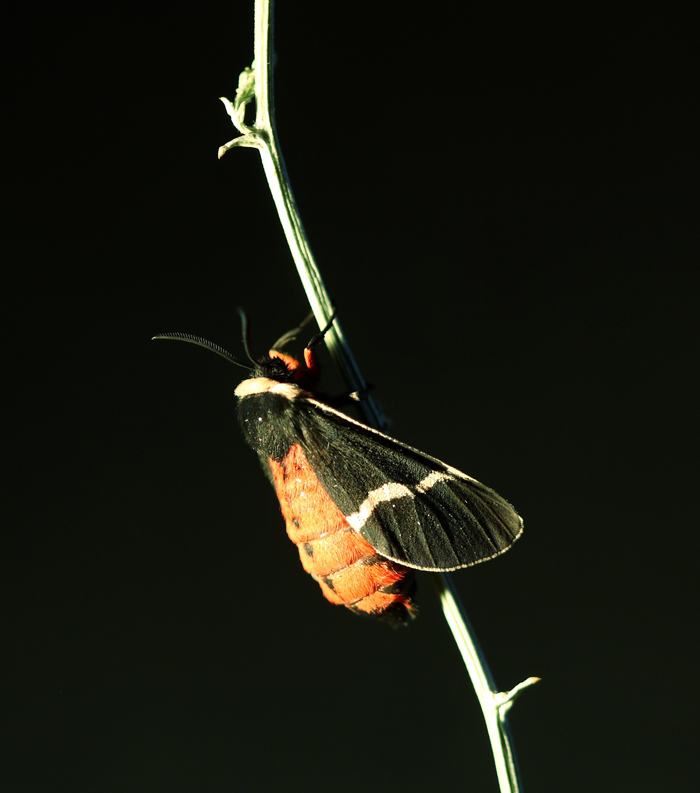
Chris Grinter, vào ngày 25 tháng, 2010 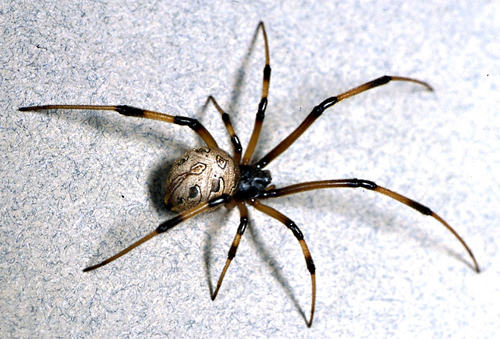
For those Californians reading, especially those in the south, keep an eye out for this beautiful little spider, Latrodectus geometricus – the brown widow. Arachnologists at UC Riverside are monitoring the spread of this invasive species. Ironically it turns out to not be as dangerous as our native black widow. Nonetheless, it is not from ’round these here parts (should be said in your best southern twang). If you find a specimen, especially if you’re not in LA/Orange/SD counties, you should contact the team at UCR.
Chris Grinter, vào ngày 25 tháng, 2010 Với Hàn Quốc choạng trên các cạnh của một cuộc chiến tranh nóng, một thảm họa sinh thái của tỷ lệ chưa từng có và tình trạng bất ổn dân sự ở Jamaica (một người nào đó harshed êm dịu của họ) – chỉ để tên một vài trong số các tiêu đề ngày nay từ các nguồn khác – CNN mất thời gian để lông tơ lên trang nhất.

I usually get a little excited when I come across articles like this because I always have hopes for something so ridiculous it has to be discussed. Thankfully CNN is run by teams of drunken marmosets who like to fling crap at us. Before the Skeptical Moth epoch I would share links to cover page stories on the findings of bigfoot, chupacabra and aliens with just a few friends or spread it around facebook. Now I can ridicule CNN on a google archived medium.
I just do not understand the point of this article. John Blake doesn’t discuss an explanation for this phenomenon, offer an opinion, or ask any questions. Chắc chắn, he asks if God really cares who wins, but that question isn’t any more valid than asking if my dog (also fictional) cares what kind of car I drive (unless of course it is psychic! Nghiêm túc…people believe this). When I read articles like this I feel as if I am grading papers in a high school english class. There is no journalistic integrity, intelligent opinion or factual basis for the scribbling – there are just pretty pictures and words illustrating them. Setting the whole prayer and faith issue aside; athletes have always been known for their superstitions (another). Các “acceptance speech” phenomenon undoubtedly falls under this category. After achieving a statistically small outcome (xem hot hands), they are afraid of forgetting God in fear of magically losing their ability (not necessarily consciously). For some reason Blake restrains this article to only sports – perhaps he is intentionally playing into the massive demographic of American sports loving, bud-light swilling, christians – but clearly this is a reoccurring theme. At any awards ceremony God, Jesus or Allah is usually at the top of the thank-you list. Forget all that hard work and talent you might have, it was something or someone else. Abandoning all rational thought to a mystical being is a dangerous thing. This mindset is the same one that allows addicts to blame anyone but themselves (even if addiction is in part hard-wired), believe in faith healing, start a holy war, or let the Catholic church blame the devil.
CNN is flashing the lights and jingling the keys over the faces of their readers. Usually I leave it up to FOX news to insult my intelligence, but I am glad to know I have a choice in this market.
Chris Grinter, ngày 24 tháng 5, 2010 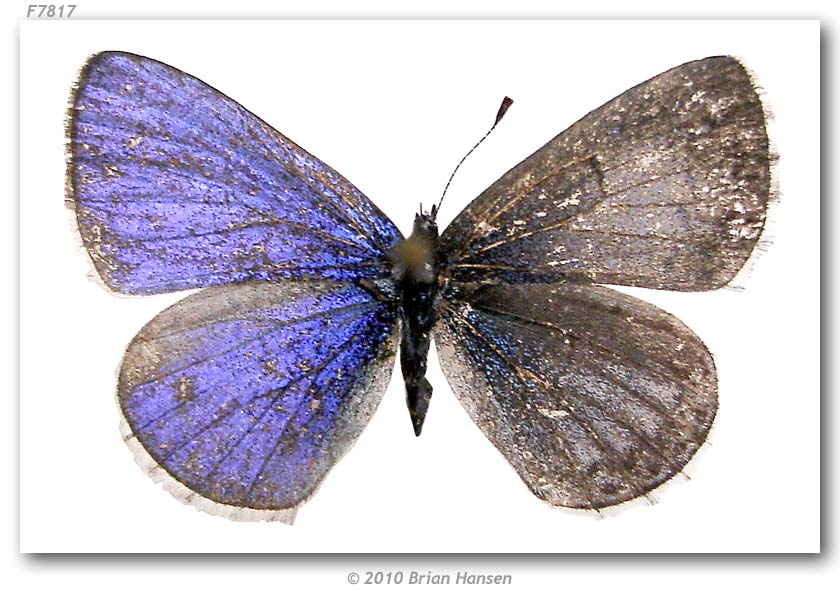
Một lần trong một sự xuất hiện đời, một gynandromorph song phương. Trong ngắn hạn, một trục trặc trong quá trình phân chia tế bào nhiễm sắc thể tạo ra mô hình không đối xứng, dẫn đến biểu hiện giới tính không đối xứng trong côn trùng trưởng thành. Nếu bạn không nhấp vào liên kết ở trên, làm như vậy, nó là một mô tả tuyệt vời với một số hình ảnh tuyệt vời.
Quay lại bướm. Tôi đã trong lĩnh vực này ngày này ngay trên ngã ba giữa sông Mỹ trên hunt cho Xanthothrix, với tôi là Brian Hansen và Bob Patterson. Bob và tôi là một nhiệm vụ, xác định vị trí một bản vá từ xa của cây phòng phong cao đất ngoằn ngoèo, và tìm bướm ít hiếm hoi của chúng tôi. Brian đến cùng để tận hưởng những ngày và khám phá khu hệ bướm. Trong khi Bob và tôi leo lên phía trước lo lắng để xem những ngày đi lang thang sẽ được giá trị nó, Brian dừng lại thường xuyên để leps qua mạng. Đó có thể là ít hơn một giờ ra khỏi xe khi chúng ta nghe dạng phía sau chúng tôi trên đường mòn “Hey guys… Tôi nghĩ rằng tôi chỉ bắt được một gynandromorph!!!” được, Tôi đã hoài nghi. Bob và tôi đến gần để xem Brian cầm nhỏ màu xanh trong tay, mà không thể nhầm lẫn, là một gynandromorph song phương. Tôi đã thổi bay đi. Bob đã có hơn 50 năm kinh nghiệm như là một lepidopterist avid và chưa bao giờ nhìn thấy một trong những trong tự nhiên. Để thực hiện chiến công này thậm chí còn ấn tượng hơn, bướm nhỏ màu xanh này là một trong những loài côn trùng phổ biến nhất ở phía tây của Mỹ vào mùa xuân. Hôm nay, họ đã puddling với số lượng lớn dọc theo đường mòn, và tôi thậm chí đã không ngừng nhấp nháy tại một. Brian chỉ ghi được một trong một triệu người bắt. Có lẽ đó là lời nguyền của một lepidopterist mệt mỏi, nó sẽ giúp tôi từ đó phát hiện ra một lần trong một đời; nhưng tôi biết tôi sẽ được xem xét kỹ hơn ngay cả những con bướm phổ biến nhất vì nó đôi cánh của tôi.
Vì vậy, bạn sẽ nhìn thấy bướm là chính xác một nửa nam nửa nữ (phía bên phải là phụ nữ). Nếu bạn nhìn rất chặt chẽ, bạn thậm chí có thể nhìn thấy một đường thẳng đứng hoàn hảo cắt đôi cơ thể nếu côn trùng (trông giống như một chỉnh sửa photoshop gần như), gynandromorphism sau khi tất cả được thể hiện trong toàn bộ cơ thể và thậm chí cả cơ quan sinh dục đang méo mó thành các hình dạng kỳ lạ.
Các mẫu vật trong bộ sưu tập cá nhân của Brian Hansen, và bạn có thể tìm thấy những hình ảnh lưu trữ trên Bướm của trang web của Mỹ.

Chris Grinter, on May 23rd, 2010 
Tự nhiên, it was named Phallus drewsii. This comes form the list of the top 10 species named trong 2009, complied by Arizona State University (not a very good list if 7 of my new species weren’t on there…). While I tend to avoid phallic and O’Keeffesque botany, this one I couldn’t resist because it was named after someone from my own institution. Tiến sĩ. Robert Drewes now has a small phallic fungi named after him (with permission). Taxonomy humor at work.
Chris Grinter, on May 18th, 2010 
Has just been posted over at Bọ cánh cứng trong các Bush. Go over and explore the latest moth carnival, a gathering of blogs that have featured moths in one way or another over the last month or so.
Chris Grinter, on May 18th, 2010 News in from India, a butterfly photographer has been kidnapped. A local park official who was visiting the north eastern province Arunachal Pradesh was taken at night by a gang of armed youth-rebels. Efforts to find him have been hampered by the weather and remote terrain. India has recently become one of the most difficult countries to conduct research in, and now we are all reminded of its continuing history of violence. Often it is within the remote and wild portions of a developing country that harbors both stunning biodiversity and militant dissidents. While in Ecuador my group kept an eye out for Columbian FARC rebels who may have strayed across the border; thankfully it was only a minute possibility they would be there in the first place, and nothing was seen. I think some of my most harrowing field work has been along the US-Mexican boarder states and in Mexico itself. Drug runners would rather shoot you before asking you to move out of their way, and roaming banditos were responsible for a murder of a colleagues friend in Oaxaca years ago. Not surprisingly, the lure of untapped biodiversity keeps pulling us in. Stay safe in the field!
Chris Grinter, on May 5th, 2010 Over a long weekend I’ll be out in the field. Stay tuned for incredible stories (no hype here…).
While I’m away enjoy the following from other excellent bloggers:
Continue reading Gone Collecting
Chris Grinter, on May 5th, 2010 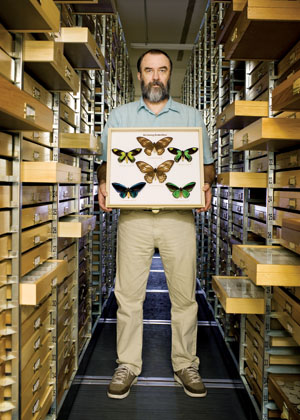 It’s good to throw a changeup every one in a while, and this week here is an article that is actually GOOD. Vâng, you read it here first, một positive article about entomology collections. We all need a breather after that Fox news fiasco with the Michigan State collection. The Honolulu Magazine does a really great job (hey… I knew that title sounded familiar… it’s a book by May Berenbaum) and they actually seem to get it. There are some great quotes from Dr. Neal Evenhuis (pictured) and Shepherd Myers; go read about the Bishop Museum’s collections and the awesomeness of being an entomologist on one of the most beautiful places in the world. Trên thực tế, Neal, need a curatorial assistant? It’s good to throw a changeup every one in a while, and this week here is an article that is actually GOOD. Vâng, you read it here first, một positive article about entomology collections. We all need a breather after that Fox news fiasco with the Michigan State collection. The Honolulu Magazine does a really great job (hey… I knew that title sounded familiar… it’s a book by May Berenbaum) and they actually seem to get it. There are some great quotes from Dr. Neal Evenhuis (pictured) and Shepherd Myers; go read about the Bishop Museum’s collections and the awesomeness of being an entomologist on one of the most beautiful places in the world. Trên thực tế, Neal, need a curatorial assistant?
Chris Grinter, on May 4th, 2010
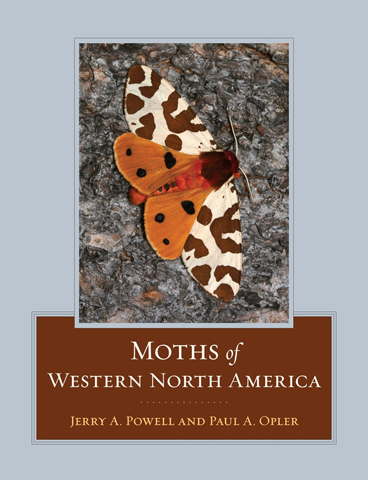
For those who are not aware, a new book hit the market at the end of last year. “The Moths of Western North America“, Powell and Opler. At only $95 it’s worth every cent (hoặc $75 for the e-book, but I hate e-books). It’s a remarkable tome and the first of its kind for the western states. Not only is it a spectacular reference, but it sets the bar for all insect books. No, not every moth in the west is in there (that would break my desk and wallet at over 6,000 loài), but almost one of every genus and common or remarkable species has a photograph, life history and distribution. Most importantly it covers microlepidoptera. I grew up on the eastern counterpart, Moths of Eastern North America by Covell. I had two copies, one for the field and one for my desk – and had to replace the field copy at least once. It was a great book, but Powell and Opler have run laps around it.
The other good news is you can now access all 1,228 moth illustrations and corresponding data online for miễn phí. Go to CalPhotos and search for Powell, hoặc click here. The nice part about this is the somewhat smaller microlep photos in the book are available in high-resolution for better identification. Beautiful addition to the reference and easier than sending everyone a CD.
|
Người không tin
|









